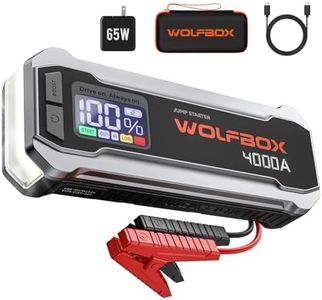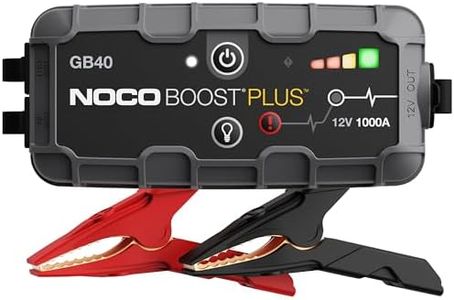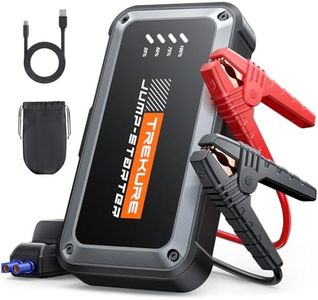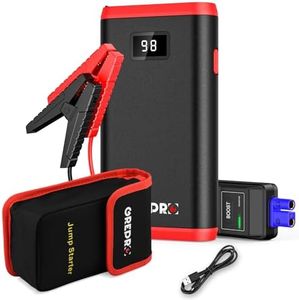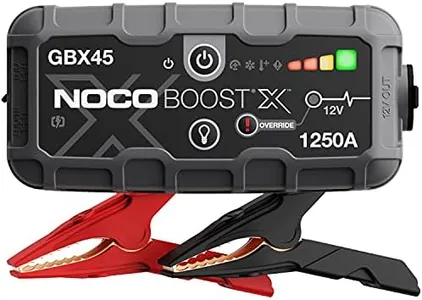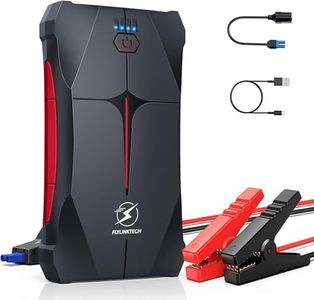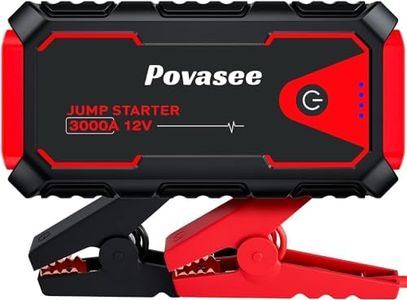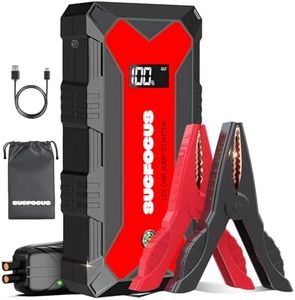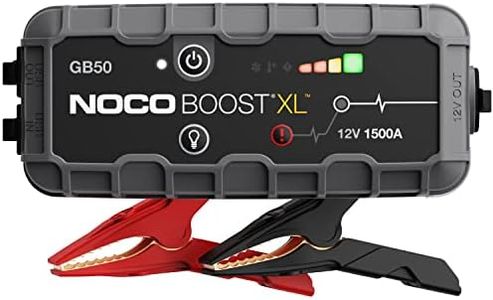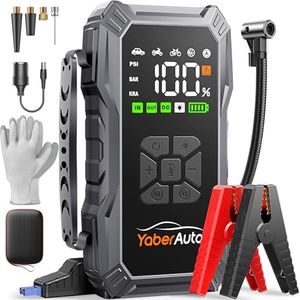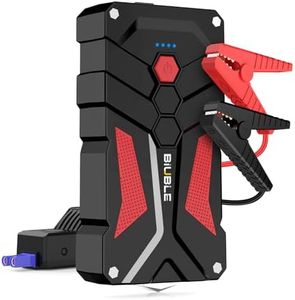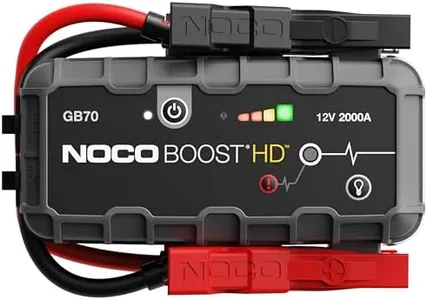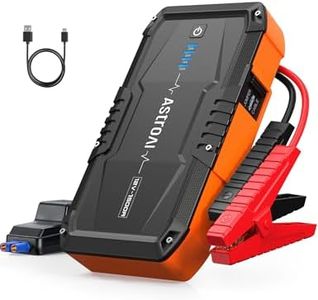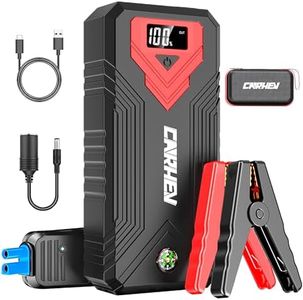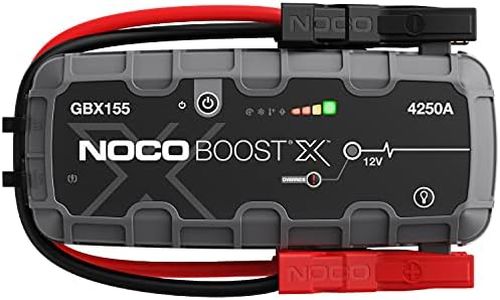We Use CookiesWe use cookies to enhance the security, performance,
functionality and for analytical and promotional activities. By continuing to browse this site you
are agreeing to our privacy policy
10 Best Jump Starters
From leading brands and best sellers available on the web.Buying Guide for the Best Jump Starters
Jump starters are essential tools for anyone who drives a vehicle, as they provide a convenient and reliable way to start a car with a dead battery. When choosing a jump starter, it's important to consider several key specifications to ensure you select a model that meets your needs. Understanding these specifications will help you make an informed decision and ensure that you have a jump starter that is both effective and easy to use.Peak AmpsPeak amps refer to the maximum amount of current the jump starter can deliver in a short burst. This is important because it determines the jump starter's ability to start a vehicle with a dead battery. Generally, higher peak amps mean the jump starter can handle larger engines or more challenging starting conditions. For small cars, 400-600 peak amps may be sufficient, while larger vehicles like trucks or SUVs might require 1000 or more peak amps. Consider the size of your vehicle's engine and typical weather conditions when choosing the right peak amps for your needs.
Battery CapacityBattery capacity, often measured in milliamp-hours (mAh), indicates how much energy the jump starter's battery can store. This is important because it affects how many times you can use the jump starter before needing to recharge it. A higher capacity means more starts or the ability to charge other devices like phones or tablets. If you plan to use the jump starter frequently or for multiple vehicles, opt for a higher capacity. For occasional use, a lower capacity may suffice.
PortabilityPortability refers to the size and weight of the jump starter, which affects how easy it is to carry and store. This is important for convenience, especially if you need to transport the jump starter between vehicles or keep it in a small space. Compact and lightweight models are easier to handle and store, but may have lower power or fewer features. Consider how and where you plan to use the jump starter to determine the right balance between portability and power.
Additional FeaturesAdditional features can enhance the functionality and convenience of a jump starter. Common features include built-in flashlights, USB ports for charging devices, air compressors, and safety features like reverse polarity protection. These features can be important depending on your needs. For example, a flashlight can be useful for nighttime emergencies, while USB ports can keep your devices charged on the go. Consider which features are most important to you based on your typical usage scenarios.
Safety FeaturesSafety features are crucial in a jump starter to prevent accidents and ensure safe operation. Important safety features include reverse polarity protection, overcharge protection, and short-circuit protection. These features help prevent damage to your vehicle's battery and the jump starter itself. If you're not experienced with using jump starters, prioritize models with comprehensive safety features to minimize the risk of user error.
